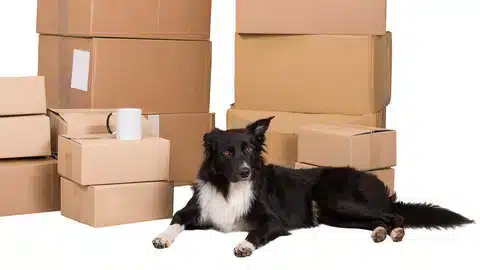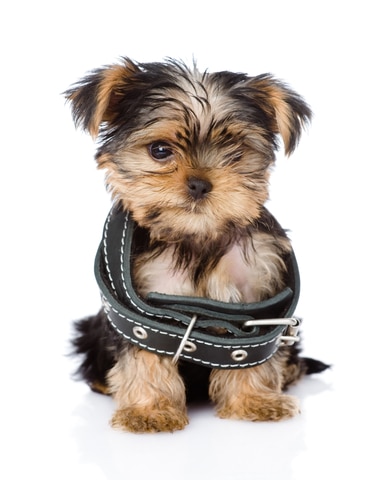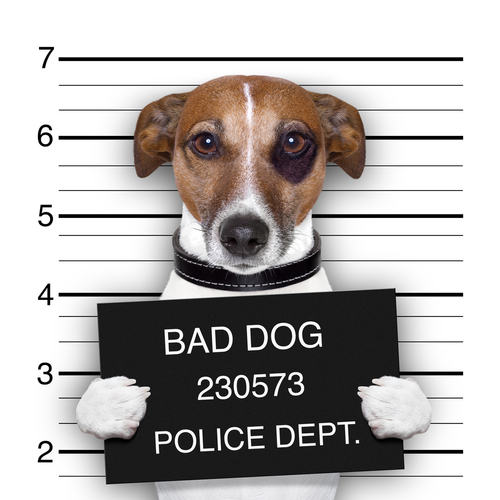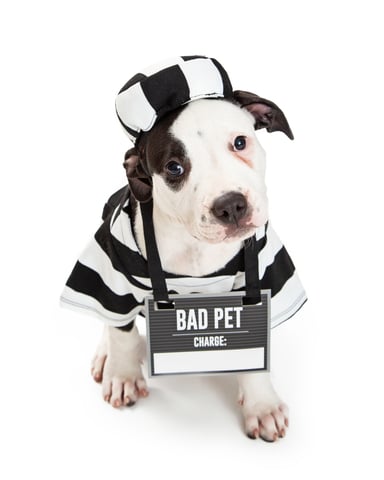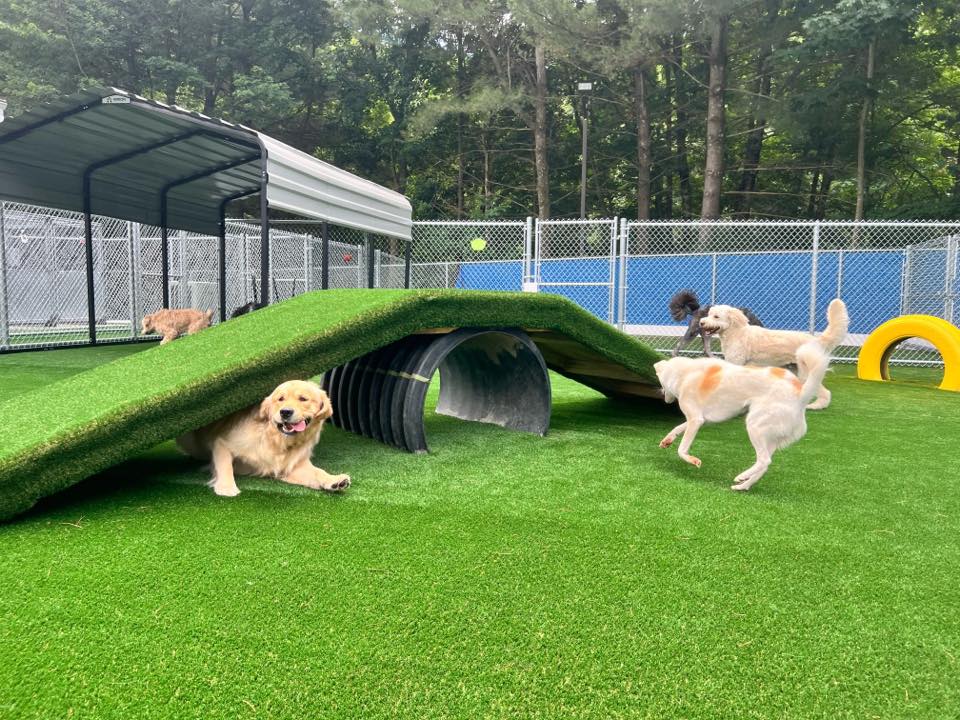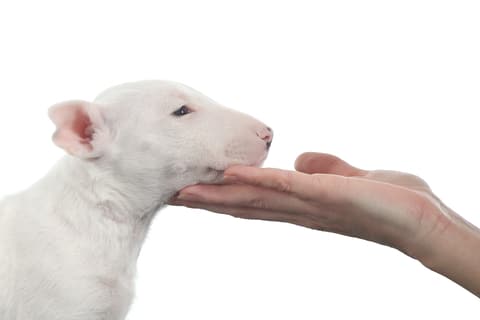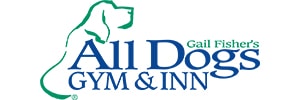Helpful Behaviors for Everyday Life.
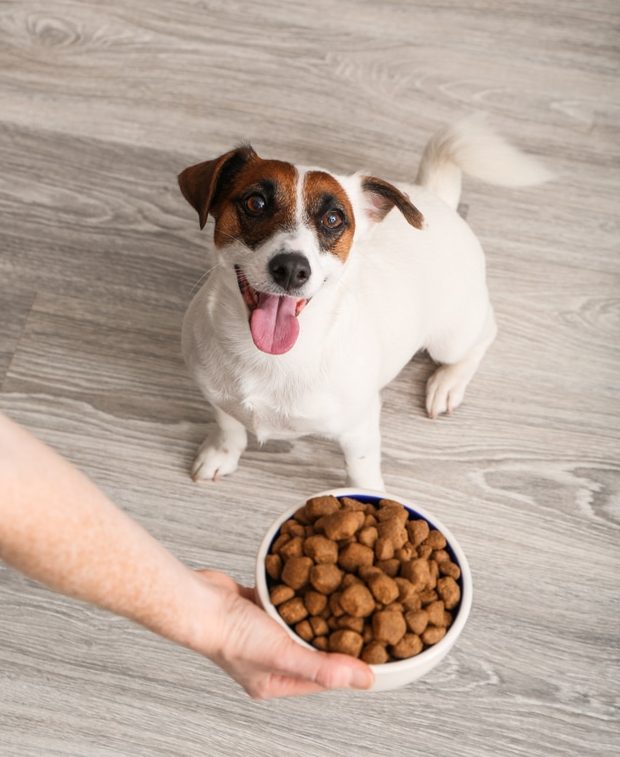
In our article about Earning Life’s Rewards (ELR), you learned how to teach your dog to say “please,” offering polite behavior. Polite behavior teaches your dog self-control, also called “impulse control.” In addition to the behaviors in ELR, here are some other behaviors that can be taught without needing to set aside specific “training” time. They can easily be included in your everyday interaction with your dog.
Teaching an “off” switch
I’m done petting: In ELR, we recommend teaching your dog to say “please” to request being petted. But what about when you don’t want to pet your dog anymore? Here’s how to teach your dog an “off” switch when you’re done:
After you’ve petted your dog for awhile, calmly say “no more” or “all done” and fold your arms. Ignore your dog’s nudging or pawing. Avoid looking at your dog, and don’t repeat the cue. Some dogs can get really obnoxious in their demand for further attention. If this is the case with your dog, just get up and walk away.
The first time you do this, your dog may be really insistent, but don’t give in! Giving in reinforces persistence—something you definitely do not want! With each progressive lesson, your dog will give up trying sooner. After some repetitions, one “no more” will be enough to have your dog leave you alone, find something else to do, or lie down and relax.
I’m done playing: Another use for an “off” switch is when you’re playing a game with your dog, such as tug o’ war or retrieving. When you’re finished playing, say “all done” and either drop the toy/ball or take it with you and walk away. You can use the same cue you use for discontinuing petting, or use a different one. I use “no more” for petting and “all done” for play. It probably doesn’t matter, but it’s what I’ve always done, and it works.
Teaching “wait” for dinner
In ELR, we showed you how to teach your dog to say “please” for his meal. It’s easy to add an additional step to this, asking your dog to wait until you release him to eat. We recommend using the cue “wait” for this and several other exercises.
Holding your dog’s dish aloft, when your dog sits, cue “wait” and start to put the dish on the floor. As you lower the dish several inches, chances are your dog will get up. The moment he rises, say “nope,” lift the dish, and return to your starting position. Repeat “wait” (same calm tone of voice) and lower the dish a foot or so. Pause, say “Yes!” or “Okay!” put the dish down and let him eat. If your dog gets up before your release word, say “nope” and start over.
Repeat this process each meal. Cue “wait,” gradually lowering the dish closer to the floor each time. Pause, and release your dog. Once the dish is on the floor, keep your hands on it ready to pick it up again, pause for a two seconds, then release your dog. The final step is to remove your hands and stand up straight. Be ready at that point to say “nope” if your dog moves, and prevent him/her from getting to the dish. By being consistent picking it up to start over each time your dog moves, s/he’ll quickly get the message. Another great opportunity to earn life’s rewards: I “earn” my dinner by politely waiting for permission to eat.
Other Opportunities for Teaching “Wait”
You’re ready to take your dog out for a walk. S/he sat politely while you put on the leash and collar (see ELR). Next, walk to the door, cue “sit … wait” and start to open the door. If your dog gets up, say “nope,” close the door and start again. “Sit … wait” and open the door. Repeat this process, marking your dog’s movement with “nope” and closing the door. After several repetitions, your dog will hold still as you open the door. At that point release your dog with “Yes” or “Okay” and go for a walk.
Use this same sequence when letting your dog:
- Go outside into your yard
- To have the leash removed for a romp in the park
- Wait in the car when the car door is opened—a really important, potential life-saver!
- And more
Use your “inside voice” – or better still, no voice
For dogs who get really excited and start barking when, for example, you want to take your dog for a walk, here’s how to eliminate excitement barking. You’ll introduce a cue word that means stop barking. More than likely, you’ve said (or yelled!) “QUIET!!” with no result. So don’t use that, or any other word that has been associated with barking.
When your dog starts to bark, say at the sight of her leash, say “hush” (or any other new word you haven’t already used a million times without success), put down the leash and turn your back. Walk away, if necessary until she is quiet for 10 seconds. Then start again. Repeat this until your dog remains quiet. Mark the quiet behavior with “Yes” and take your dog for a walk.
You can use this same sequence whenever something you do triggers excited barking that you want to stop. Say your “hush” word and walk away or turn your back. Once your dog is quiet for 10 seconds, start over and repeat.
Once your dog understands that good things happen when s/he stops barking at the cue “hush,” you’ll be able to turn off your dog’s barking at other times, too—such as when the doorbell rings. Your dog starts barking to alert you to a visitor. Thank him/her and say, “hush.” Always give you rod loads of praise for this much-desired self-control behavior.
